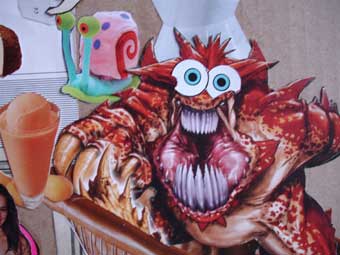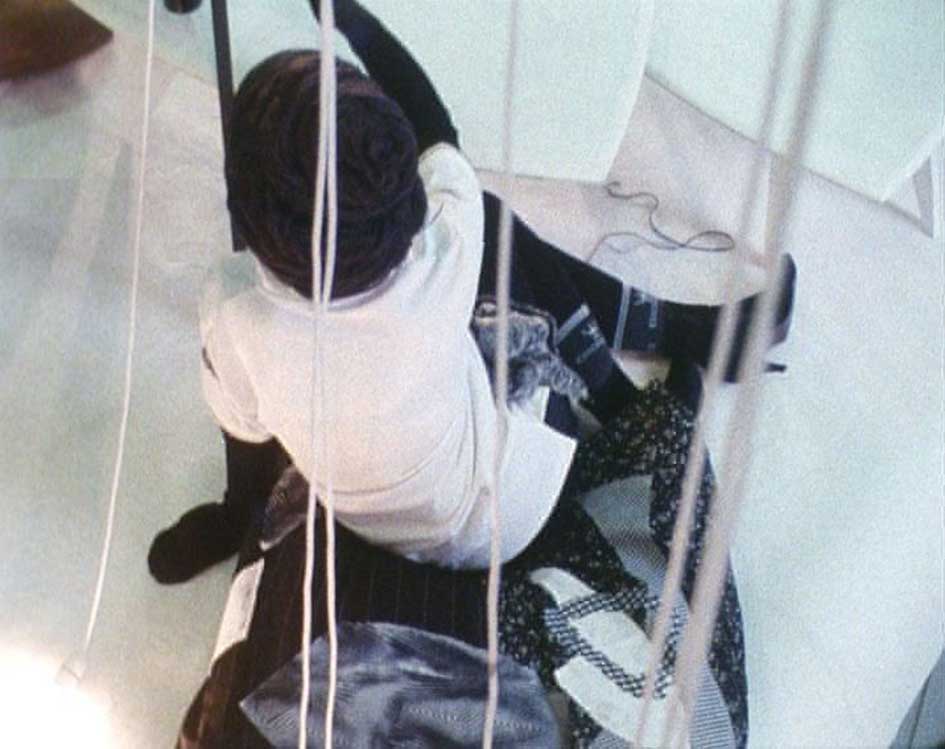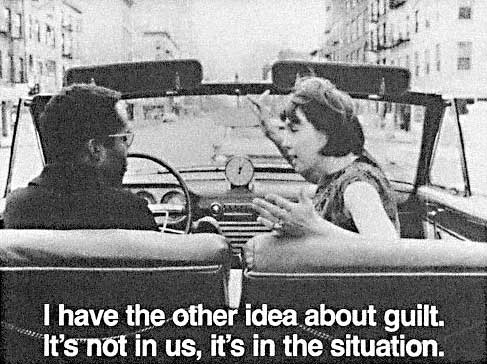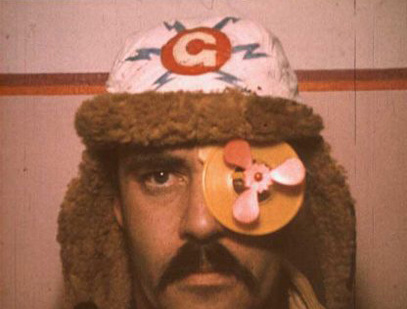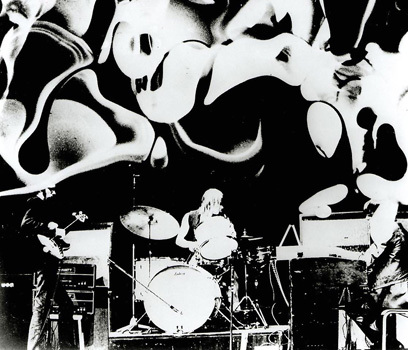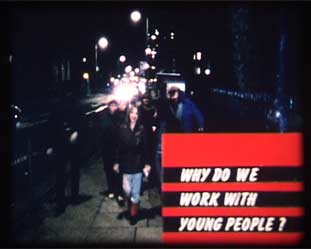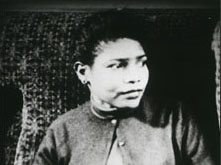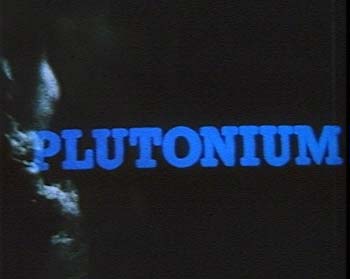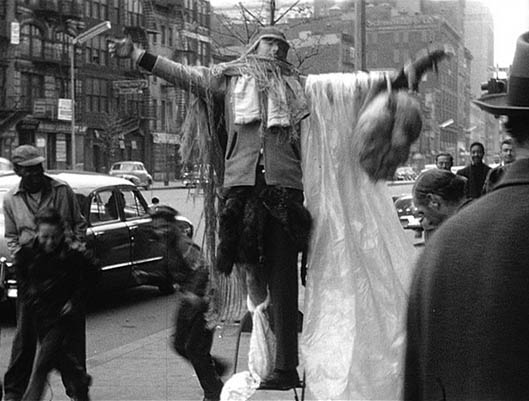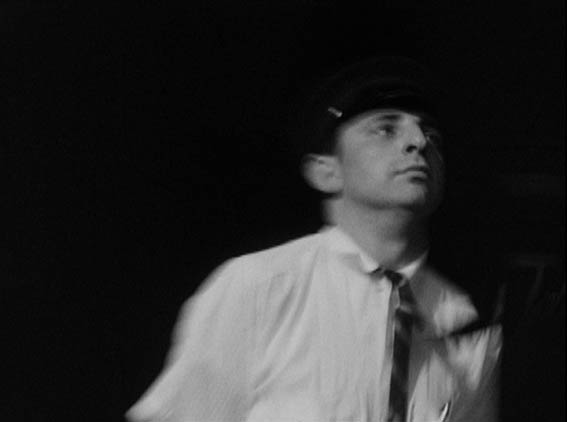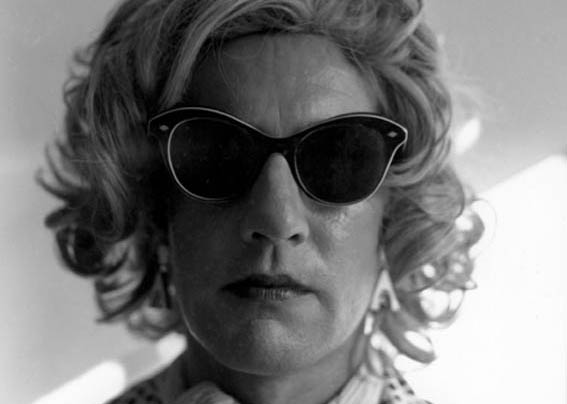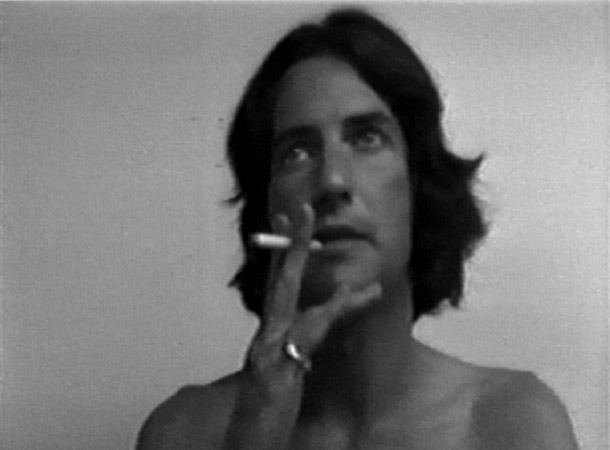THE SUBJECTIVE CAMERAGreenwich Picture House25 April - 30 May 2007The Subjective Camera is a series of retrospective film screenings of six film artists whose work examines subjectivity with an analysis of film language.
Emerging within the context of the London Filmmakers’ Co-op during the 1980s and 1990s, these artists each developed an independent practice that at once built on and countered the principles of the Structural film movement of the 1970s. Their films extend anti-illusionist explorations of the materiality of film and incorporate investigations of the materiality of the body.
With their shared history, that situates the artist at the centre of the physical process of putting the film together, sometimes as camera person as well as editor, these six artists weave into the filmmaking process a broad scope of contemporary concerns, from religion to psychoanalysis, the spaces of abstraction, voice, language and song, to the dialogue between personal and meta-narrative.
JAYNE PARKER, NINA DANINO, ALIA SYED,
MICHAEL MAZIERE, SANDRA LAHIRE, SARAH PUCILL
Curated by Sarah Pucill. Films screened in association with LUX.
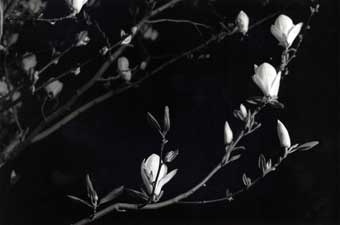 Stationary Music (Jayne Parker, 2005)
Stationary Music (Jayne Parker, 2005)Whilst
Jayne Parker's films have taken different directions over a span of nearly three decades, an individual approach is highly distinct. Always employing a pared down aesthetic, structural precision is conducted in each film where the direction and space of the camera's gaze in relation to the protagonist is woven into the performance of the film. Speech is absent from most of her films, leaving the structure of image and sound to speak in raw isolation.
Performance is central to all her films, the presence of the figure being conveyed as much by her image as in the surrounding space and the objects the body uses or, in the case of musical instruments, plays. Filming herself in her early work, her oeuvre emphasises performance as a generative process where self is in a state of becoming, a process of self-generation.
In much of Parker’s work, a resistance to a literal and singular interpretation is clear, and this is key to the power of her films. Sometimes it is in the interpretative gap that is created through the edit joins of obscurely related images, and sometimes it is a straight forward posturing of an 'almost as if but not quite' everyday activity. The subjective in Parker’s work rests within the body; its objects and its space, inside and out, as process, sound, texture, as light, as film.
I DISH (1982, 16mm, 15 mins)
K (1989, 16mm, 13 mins)
THE POOL (1991, 16mm, 10 mins)
BLUES IN B FLAT (2000, Beta SP, 8 mins)
STATIONARY MUSIC (2001, Beta SP, 8 mins)
CATALOGUE OF BIRDS: BOOK 3 (2006, 15 mins)
Jayne Parker will take part in a Q&A after the screening.
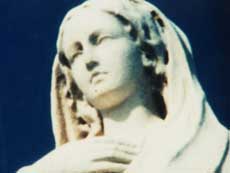 Stabat Mater (Nina Danino, 1980)
Stabat Mater (Nina Danino, 1980)'s films draw on personal history as well as literary and artistic works, and explore the relationship between image and sound that inverts the Hollywood standard of sound being slave to image.
The structural rigour of her films pushes formalist boundaries to produce a new aesthetic that takes on the urgency of female subjectivity and desire. The immediacy and unmediated nature of the voice is core to the essence of her work, which explores that part of being and expression that speaks but is neither material nor literal. She always uses her own voice, which is sometimes combined with vocal performances by established singers and sound artists. In the films selected, a close-up voice meanders rhythmically in time with a hand-held wandering camera (or deadly slow pans in
First Memory). The image is disrupted both through her structural editing process and through the intervention of sound.
In
Stabat Mater and
Now I Am Yours, Danino draws influence from French feminist theory and the aesthetic and cultural influence of her Mediterranean Catholic upbringing, and as with all her films we are taken on a journey. At the heart of her work is a celebration of the nature of desire; a meditative, often incantational filmic and aural flow is exorcised, a perpetual state of yearning as ecstasy, the co-existence of suffering and pleasure or to quote Helen de Witt, 'the persistence of spirit'.
FIRST MEMORY (1981, 16nn, 20 mins)
STABAT MATER (1990, 16mm, 8 mins)
NOW I AM YOURS (1993, 16mm, 32 mins)
THE SILENCE IS BAROQUE (1997, Beta SP, 12 mins)
Nina Danino will take part in a Q&A after the screening.
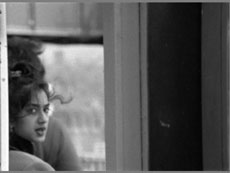 Fatima's Letter (Alia Syed, 1992)
Fatima's Letter (Alia Syed, 1992)Problems of translation and framing and how the image is read, particularly in relation to gender and cultural difference, mark the key concerns of
Alia Syed's work.
The use of her own spoken voice is present in all but her earliest films and in many ways this is countered with the fragmented body (pregnant stomach, feet, hands, neck and shoulders). A hallmark of Syed's work is the manipulation of the image; slowing, speeding up or holding the image still, which coupled with the use of repetition, gives it a textural quality. Denied access with the gaze, we are given instead her voice and stories - circular and repeating narratives of desire which both can and cannot be translated.
Through Syed's process of layering image on image, and text on text, by using edits and optical printing techniques, inner conflict is 'worked'. The image track weaves alongside a voice that is textured with different cultural spaces and languages; between fact, fiction, personal narrative and historical document. Her films flow between movements of sound, voice, image and subtitle; rhythms of colour and black and white examine a journey between borders that falls short of translation. The effect of this filmmaking process is to allow the viewer participation in a sensory experience that evokes a trans-cultural voyage one is taken into rather than kept outside as voyeur.
SWAN (1986, 16mm, 4 mins)
UNFOLDING (1988, 16mm, 20 mins)
FATIMA'S LETTER (1992, 16mm, 21 mins)
SPOKEN DIARY (2001, 16mm, 20 mins)
I AND YOU (2006, DV, 11 mins)
Alia Syed will take part in a Q&A after the screening.
 Untitled (Michael Maziere, 1980)
Untitled (Michael Maziere, 1980) is currently best known for films that distil fragments from classical narrative cinema from the 1950s and 1960s with autobiographic and personal footage.
His early films were rooted in a Structuralist approach to the phenomenology of perception in film and this attention to formal structure and perception persists in his later work. Although his approach has changed significantly, a quality of restlessness pervades the breadth of his films; a tension in the dynamic between stasis and motion.
Personal and collective memory, fiction and autobiography are literally fused as clips, dialogue, music, and subtitle explore something in-between. This mosaic of film fragments discovers new cinematic territory, where suspension and loss pervades and the binding effects of explanation and closure are absent. In
Blackout and
Delirium, a crisis of masculinity is hinted at; in the key films that are cited,
The Swimmer and
The Lost Weekend, the Hollywood hero is undone.
Maziere's films challenge assumed separations between outer and inner worlds, personal and meta-narratives, while offering a dislocated yet seductive cinematic space.
THE BATHERS (1986, 16mm, 6 mins)
SWIMMER (1987, 16mm, 7 mins)
UNTITLED (1980, 16mm, 18 mins)
DELIRIUM (2001, DV, 10 mins)
BLACKOUT (2000, DV, 10 mins)
ASSASSIN (2007, DV, 10 mins)
Michael Maziere will take part in a Q&A after the screening.
 Johnny Panic (Sandra Lahire, 2000)
Johnny Panic (Sandra Lahire, 2000)'s use of light and sound as raw elements generates an energy throughout the body of her work, which fuses magical poetics with a piercing severity that swings between blinding light and pitch dark - the raw bones of film material. Interweaving her own body into her films, connections between the personal and the social were core to her practice. Lahire eliminated the borders of discipline and genre; the documentary, the avant-garde, the autobiographic and the biographic.
Her first film
Arrows, draws on fellow anorexic sufferers as shared experience. In her
Uranium Trilogy, interviewing (Uranium) minors in Canada, she places herself physically into the position of her subject. This self-other interchange is explored later in her trilogy based on the writings of the poet Sylvia Plath; where viewer and viewed, reader and writer turn place.
Lahire's films are constructed in the form of a weave, building layers of image, sound and voice, drawing circular and plural narratives. The work is often confrontational. No subject was taboo and in her final film,
Johnny Panic, Lahire goes deepest into her exploration of the complex relationship between death and its attractions. Moving between micro and macro politics, her work tackled the impossible, from her own suffering to the political realities of Fascism, McCarthyism and ecological disaster.
NIGHT DANCES (1995, 16mm, 17 mins)
JOHNNY PANIC (2000, 16mm, 46 mins)
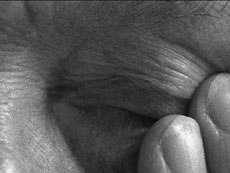 Taking My Skin (Sarah Pucill, 2007)
Taking My Skin (Sarah Pucill, 2007)Subject-object relations and the space between are core concerns in the breadth of
Sarah Pucill's work. From the surface of a face projected on objects, hair entangled in crockery, a bowl as mouth gasping for breath, to her more distanced and contemplative later works that feature her mother and late partner, there is a turning and switching of place between inside and outside. The body as expression, as surface, and as film underscores the trajectory of her practice.
The unsettling character of Pucill's early films, derived from their formality and stillness, remains present in her more recent work. However, films such as
Stages of Mourning and
Taking My Skin, while still rooted in concerns of femininity and sexuality, shift emphasis and employ a more meditative approach that foregrounds the film-making process, mortality, death and being.
Sarah Pucill's films explore a sense of self which is fluid and transformative, where mirroring and merging are sought in the Other. Her work is concerned with the idea that as subjects we are not separate, and draws together surfaces of inside and outside, the animate and inanimate.
MIRRORED MEASURE (1996, 9 mins)
STAGES OF MOURNING (2003, 16mm, 19 mins)
TAKING MY SKIN (2006, 16mm, 35 mins)
Sarah Pucill will take part in a Q&A after the screening.
all screenings at
Greenwich Picture House
180 Greenwich High Road, London, SE10 8NN
Nearest Train: Greenwich BR / Greenwich DLR / Cutty Sark DLR
MAP OF AREATickets: £6
Box Office: 087 0755 0065
www.picturehouses.co.ukLabels: london
